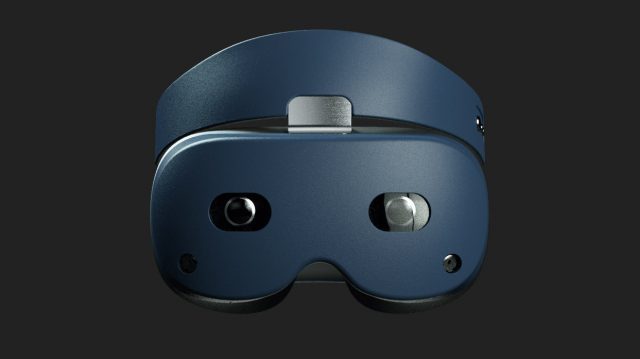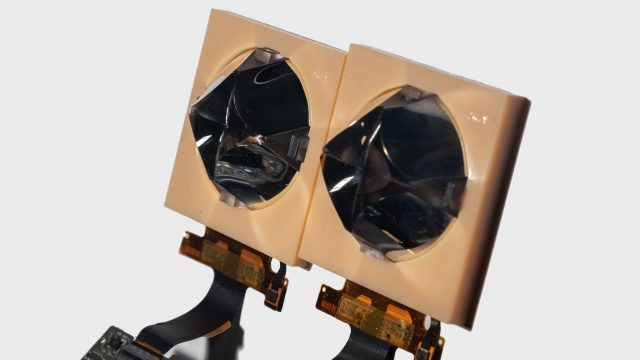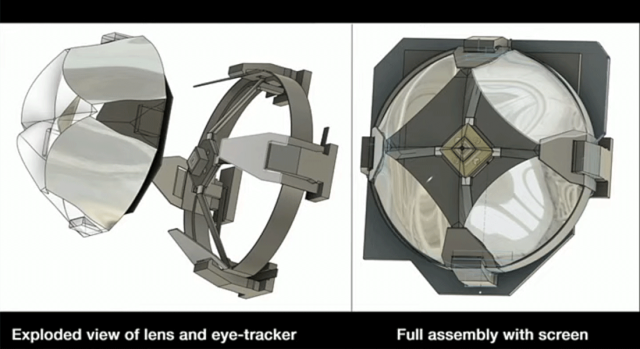
LYNX is a startup building a standalone MR headset that’s primarily focused on passthrough AR scenarios for enterprise applications. The France-based company revealed its R-1 headset earlier this month and expects to deliver the first units this Summer for $1,500. We spoke to founder Stan Larroque to learn more about the company’s background, ambitions, and tech.
More on Lynx R-1
Lynx Funding

Speaking with Road to VR, Lynx founder Stan Larroque said that his company has raised $2 million as of 2019, and is presently in talks with investors for the company’s next funding round.
With $2 million raised Lynx is still very much in the early startup stage; while this amount is just a drop in the bucket compared to the resources of XR incumbents, it’s a starting point similar to Oculus which got its start after raising $2.4 million on Kickstarter back in 2012.
Furthermore, $2 million goes further today toward a creating an XR headset than it did years ago thanks to more readily available and mature hardware, supply chains, and software. For instance, the Lynx R-1 will use Qualcomm’s made-for-XR chip, Snapdragon XR2, and Lynx has several other huge shortcuts to market that weren’t available to companies just a few years ago.
Software & Content

One of those shortcuts to market comes through Qualcomm’s hardware accelerator program and its XR SDK. Qualcomm supports partners with hardware and software reference designs which act as blueprints for companies like Lynx to quickly commercialize headsets. The Qualcomm XR SDK includes core functionality like inside-out head tracking and the ability to run applications on a headset without writing a new application framework from scratch.
Larroque tells us that Lynx R-1 will run Android 10 and the company will supply an SDK that’s built on top of the Qualcomm XR SDK. A Unity plugin will be offered, and Larroque says the headset will support OpenXR, which means any content or developer tools built against that API should have little problem getting up and running on the R-1.
It’s still not clear if the company plans to operate its own storefront or (given the enterprise focus of the R-1) simply leave it up to customers to acquire and load content within their organizations as necessary.
Larroque told Road to VR that the R-1 could support tethering to PCs to run high-end content that would be too much for the headset’s standalone processor to handle.
Lenses, Displays, & Manufacturability

Compared to other headsets on the market, the Lynx R-1 is using a completely unique lens which Larroque says reduces the distance between your eye and the display, making the headset more compact than if the company used a traditional lens. He also confirmed to Road to VR that the Lynx R-1 will use the new VR displays from JDI that entered mass production this week.
The novel “light folding” optics also allow the R-1 to ‘hide’ an eye-tracking camera positioned directly at the center of the lens. This allows for the best view of the eye, which could improve eye-tracking accuracy compared to other approaches which often view the eye from extreme angles.

Clearly the R-1 lens is more complicated than what’s seen in most contemporary headsets. Larroque told Road to VR, “it’s hard to design, but it’s not hard to manufacture,” when asked about the complexity of the optics. “It’s a simple block built using injection molding. So the price is not an issue,” he claimed.
Another benefit of the lens, Larroque said, is optical supersampling; while the display itself has a resolution of 1,600 × 1,600, the image is split into four quadrants and reassembled in the lens where portions of it are overlapped, which improves sharpness in those areas. Luckily this approach doesn’t require rendering four individual views for each frame; a shader is used to split the image appropriately in a single draw-call.
As for the ‘effective resolution’ Larroque said, “you still have a 1,600 × 1,600 image, but with a sharper feeling at the center.”
The company says the R-1 will have a circular field of view of 90 degrees and 18 pixels-per degree. If the supersampling works as described, the headset should have very impressive clarity, which will be important as enterprise use-cases are more likely to require high text legibility than a gaming-focused headset. Compared to headsets targeting similar use-cases, like HoloLens and Magic Leap, at 90 degrees, the R-1 would have a significantly larger field of view for its AR content than those headsets, though it would restrict the user’s natural field of view by comparison.
– – — – –
Lynx expects to ship the R-1 starting this Summer. Priced at $1,500, the headset became available for pre-order earlier this month.
The post LYNX Has Raised $2 Million for Its R-1 Headset, and Other Background on the XR Newcomer appeared first on Road to VR.
from Road to VR https://ift.tt/2SGauqM
via IFTTT
No comments:
Post a Comment